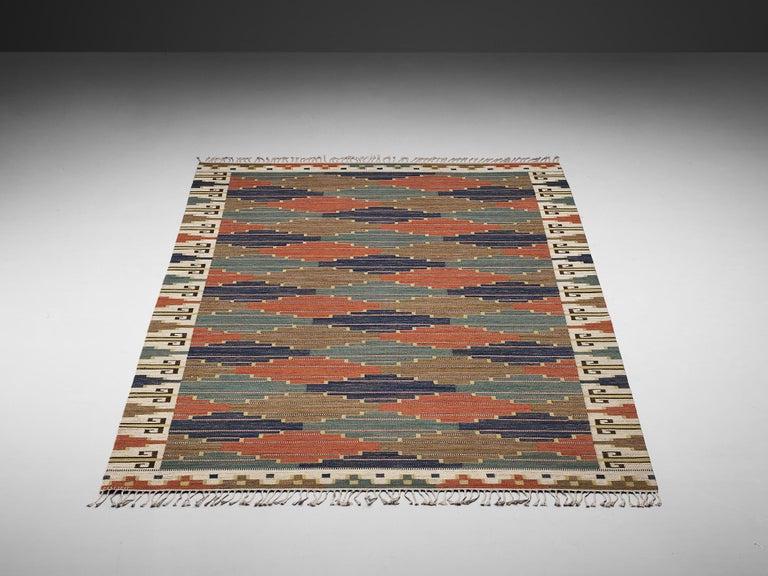
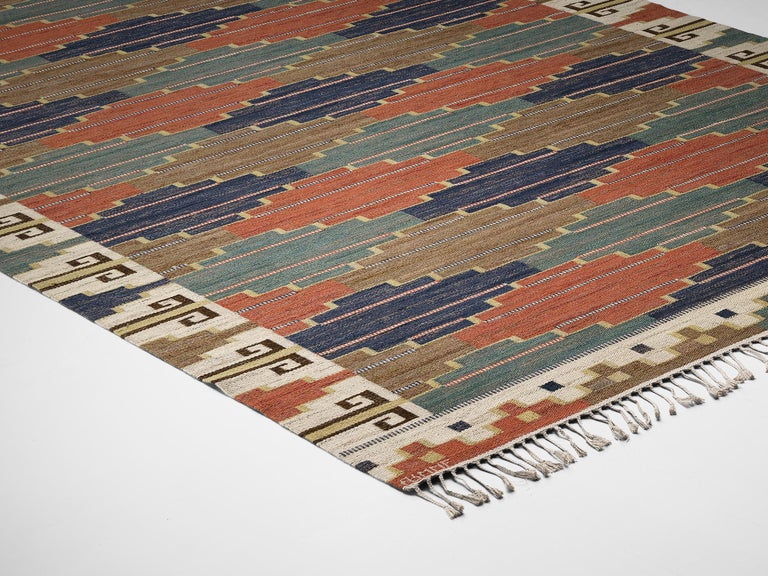
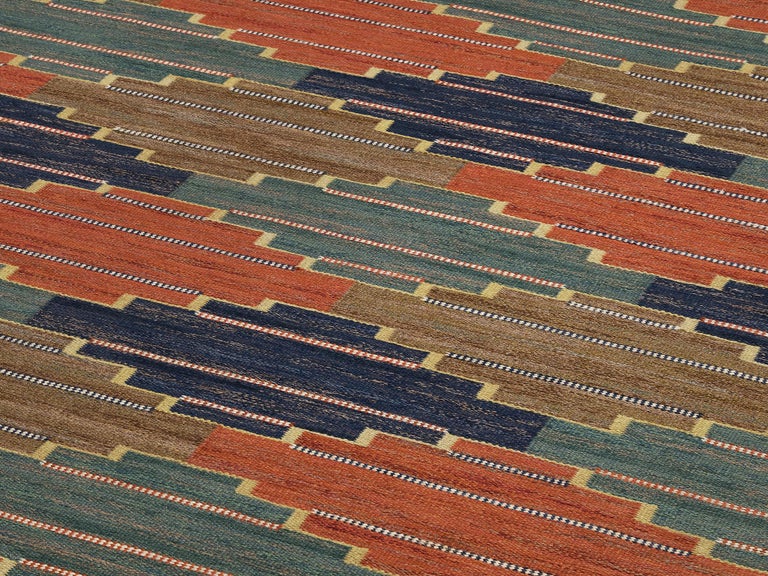
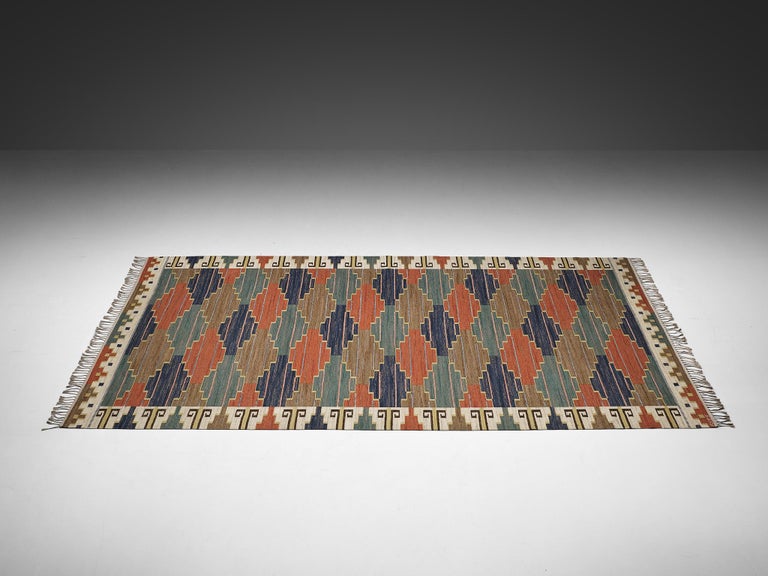
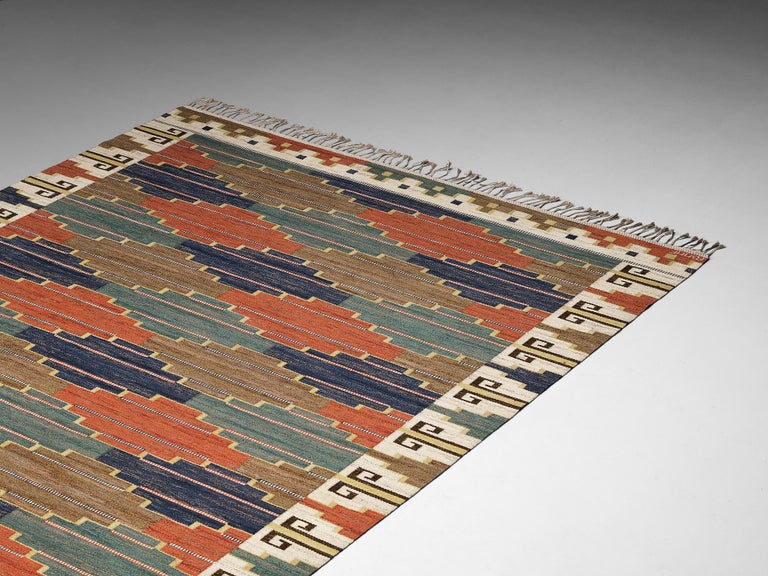
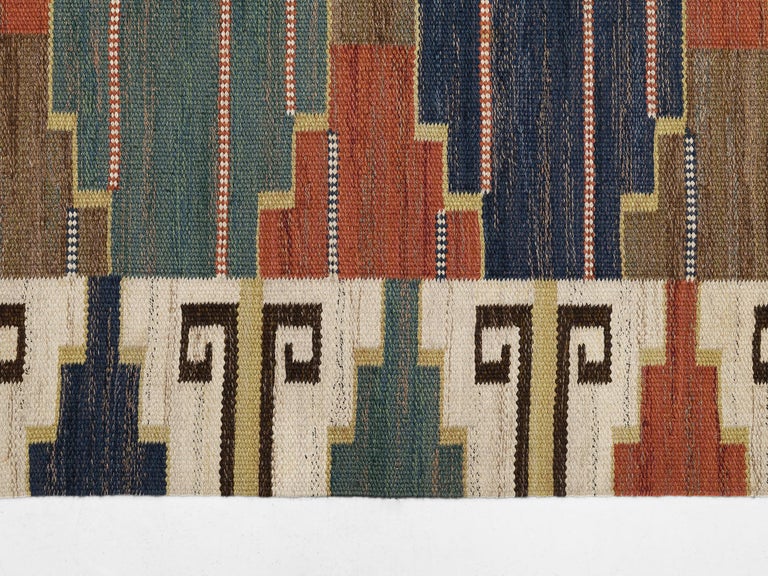
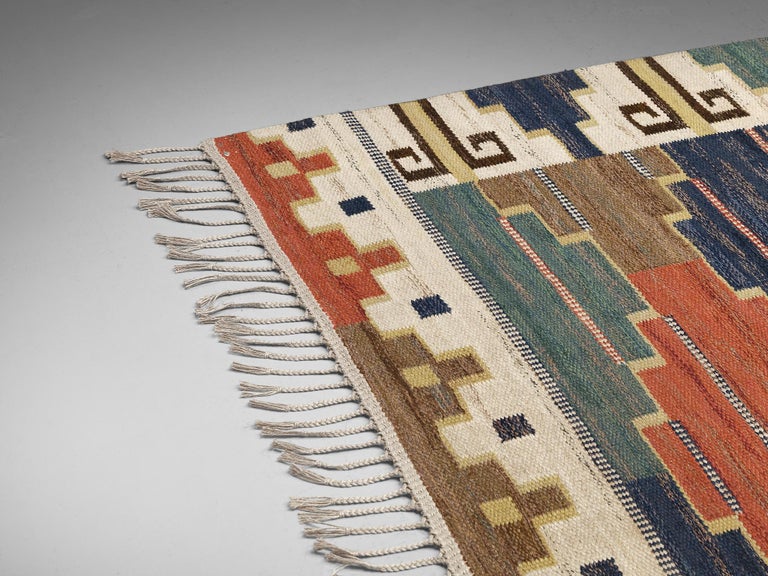
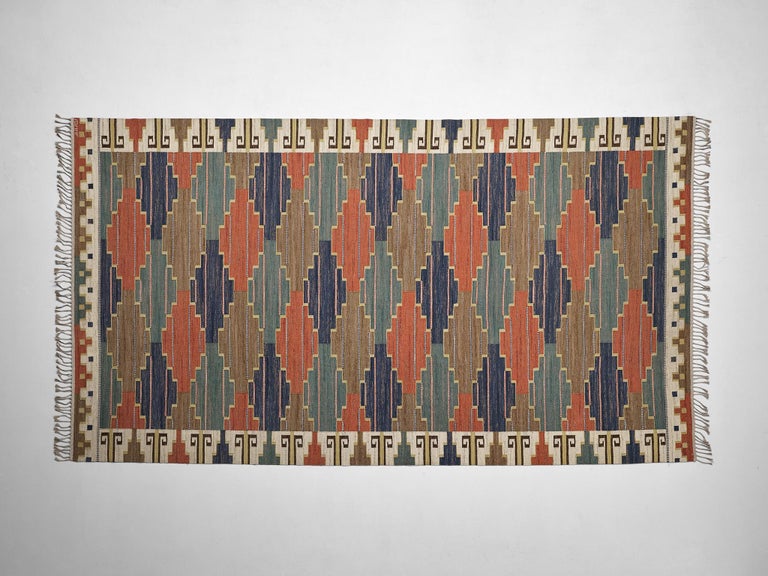
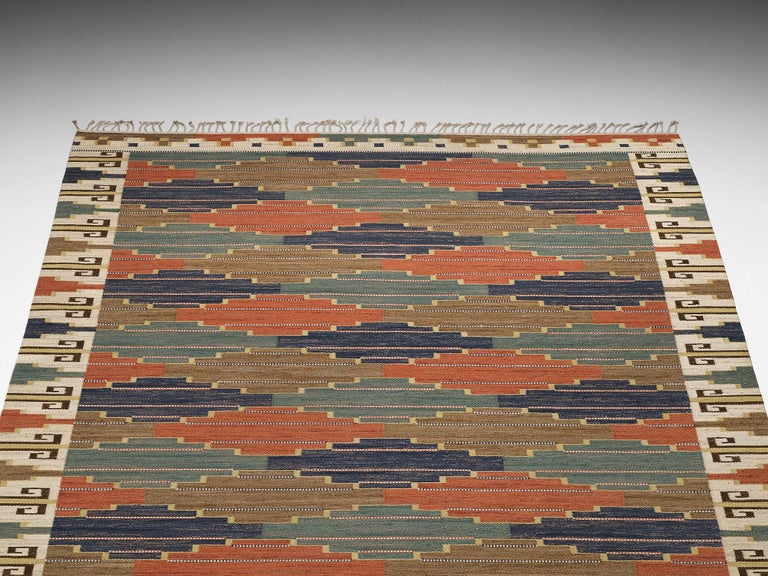

Märta Måås Fjetterström Handwoven 'Blå Heden' Carpet in Wool
Märta Måås Fjetterström for Märta Måås-Fjetterström AB, handwoven 'Blå heden' carpet, wool on linen warp, Sweden, designed in 1931 and woven after 1942
This handwoven carpet is designed by one of the most influential and leading Swedish textile artists of the twentieth century, Märta Måås Fjetterström (1873-1941). This woolen carpet is conceived by means of the rölakan flatweave technique which consists of picking wefts by hand and at each color change the wefts are laid across one another. This makes the colors interlock, resulting in solid ridges. The displayed carpet is named Blå Heden or Blue Heath, and is characterized by an abstract composition of angular shapes and decorative lines. Måås-Fjetterström used a diverse, but harmonious color palette with the colors blue, green, brown, red, and beige. The fringes surround the compositional work of art on two sides.
The bottom of the carpet is signed with ‘AB MMF’
Märta Måås-Fjetterström was born 1873 in Kimstad, a small village located in Östergötland, Sweden. At the age of seventeen, she participated the School of Industrial Arts in Stockholm with a major in art and followed a training as an illustrator and drawing teacher. After she had graduated, she started working as a teacher in the weaving studio at the Lund Museum of Cultural History (Kulturen). She was commissioned by Georg Karlin, the founder of Kulturen, to create her first textile sketches. After some years, she became the director of the Malmöhus County Handicraft Association in Malmö. Both schools, and many other institutions like these in Sweden at that time, aimed at preserving the traditional principles of Scandinavian design as a response to progressive art movements that flourished in other European countries like the Art Deco movement. Måås-Fjetterström was at that time searching for new ways to improve and individualize the traditional methods and motifs she encountered. Her ingenuity and creative approach towards the textile arts were perceived as a threat to Hemslöjden's preservation of their traditional patterns and techniques, which is why she was fired in 1911.
Shortly thereafter Måås-Fjetterström awaited a new opportunity and moved to Vittsjö where she met Lilli Zickerman (1858-1949), initiator of the National Association of Swedish Handicraft Societies. Together they directed a new weaving school where Måås-Fjetterström enjoyed her artistic independency. The school provided a workshop with skilled weavers who made it to weave the carpets and tapestries designed by Måås-Fjetterström. She developed techniques and patterns suitable for artistically produced rugs and tapestries, which were given titles and signed “MMF”. The ‘Blommande träd’ rug that is now on display is a great example of a design made by Måås-Fjetterström during this period.
In 1919, at the age of 46, Märta Måås-Fjetterström opened her own company and a weaving studio in Båstad, Sweden. At this point, she would come to revolutionize the Swedish textile tradition. She employed over twenty skilled weavers, of which the first women were her former students from the Vittsjö weaving school. Her main sources of inspiration were the nature around here, oriental knotted rugs and old Scanian textiles. Måås-Fjetterström's designs continuously changed along with the world’s zeitgeist and aesthetics. When modernist and functional architecture flourished in the 1930s, her designs took a more simplistic turn by the implementation of balanced simple lines and shapes executed in a few colors. She gained huge success on an international scale and exhibited at prominent art and industrial exhibitions in various cities located in Europe and the United States.
Towards the end of 1940, she wrote her lifelong friend Carl Malmsten (1888-1972): “But the road is long and instead of decreasing, the projects and sketches in my drawer accumulate, as if waiting to be realised. Before you can finish, life is over. I wish I could continue on another planet.” Måås-Fjetterström dies in 1941 after a period of illness, only 67 years old. She left almost 700 sketches of patterns for rugs and fabrics and working instructions, but not to forget, a hard-working team of professional weavers. The company was about to close its doors until Carl Malmsten, among others, arranged a fundraiser that saved the collection and the studio. In January 1942, AB Märta Måås-Fjetterström is launched and is directed by the textile artist Barbro Nilsson between 1942 and 1970.
Up until this day, the studio is widely recognized for its carpets and tapestries of remarkable skillful craftsmanship and designs of artistic and cultural value. Their approach to design and weaving is passed on from generation to generation. A team composed of well-educated weavers using the exact same techniques devised over 100 years ago.
VAT within the EU: When buying or delivering an item within the EU, VAT usually applies and will be added.
Choose options










Product Details